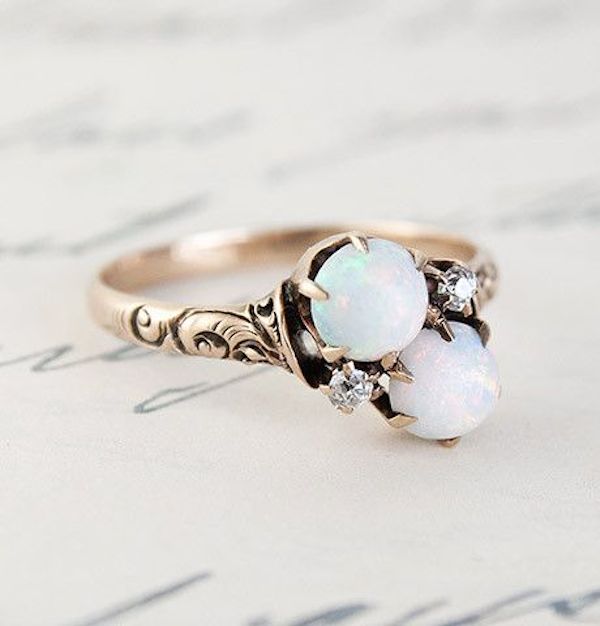Many grooms do feel they have to splash out on the traditional sparkler when it comes to popping the question, but the modern custom for diamond rings that cost three months’ salary was actually only introduced as a marketing campaign by acclaimed jeweller, De Beers back in the 1930s. And it stuck!
But you don’t have to follow suit.
Whether it’s a clear stone that looks almost as sparkly as the real thing (no one has to know!), or a coloured stone that will set your ring apart, we’ve come up with 8 gorgeous alternative gems that will look just as precious as a diamond engagement ring, when you say “Yes!”.
1. Amethyst

This pretty purple stone does tend to be seen in a raw state, but if it’s well cut, it can look truly beautiful in fine jewellery.
At 7 on the Mohs scale (diamonds are 10), Amethysts may not be quite as hard, but they’re still very durable and a fraction of the price. Pair the lavender hue with silver or rose gold for a gorgeous, romantic setting or set with other colours for something a little quirkier.
2. Turquoise

Turquoise has become a really trendy stone over the last few years with leading alternative jewellery brands like Azlee and Mociun using it across their collections.
Turquoise ranges from 5 to 7 on the Mohs scale and with a composition of copper and aluminium, it can range from a pure bright blue, to a pale hue with flecks of metal. Pair with small diamonds in the setting for a luxe finish to a matte stone.
3. Sapphire

Sapphires are typically a blue precious stone, but they do also come in other hues like peach, pink, yellow, green and white.
At 9 on the Mohs scale, sapphires are the third hardest mineral, and at about a third of the price, they make the perfect diamond substitute. While a white sapphire engagement ring won’t capture quite the same sparkle as a diamond, if it’s well cut, it can look almost as good, giving more bling for your buck if you’re looking for a larger stone.
4. Emerald

Emerald, with their distinct rich green tone, are beautiful, luxe, and precious, which makes them a popular stone for engagement rings.
While they have fallen out of style over recent years, added to a modern setting, they can look both chic and timeless, and at 7.5 to 8 on the Mohs scale, emeralds can be forever too!
5. Opal

Opals make the most beautifully unique clusters, and while they were seen as old-fashioned, over the last few years, they’ve been making a comeback. Opals come in black, white and crystal and depending on their vibrancy, they reflect the entire rainbow as they move and dazzle – because of this, no two opals are ever the same.
Avoid choosing a dull stone and look for gems with pretty patterns and antique settings. At 5.5 to 6.5 on the Mohs scale, opals are not as hardy as other gems, but do make beautiful engagement ring stones if you don’t mind a little tarnish or if you plan to wear your ring only occasionally.
6. Topaz

Topaz, with its dazzling array of colours and luxe clarity, is a natural choice for engagement rings. While they can differ in their mineral content, topaz gemstones tend to be an 8 on the Mohs scale.
A pure topaz is actually colourless, and the blue, orange, red, green and pink hues are actually created by imperfections in the stone. We think that beautiful quirk makes them a sweet stone to give your other half on your engagement!
7. Pearl

Pearls are beautiful and iconic, whether they are in a luxe antique setting or a chic modern ring. The bad news is though, that pearls are made from calcium carbonate, which means at 2.5 to 4.5 on the Mohs scale, they will scratch and tarnish easily.
Select a pearl engagement ring if you plan to wear it only occasionally, or if you choose smaller pearls, set into surround of hardier gemstones.
8. Ruby

Like emeralds and sapphires, rubies are one of the four precious stones, making them an extremely popular choice for engagement rings with their rich, luxurious blood-red tone.
At 9 on the Mohs scale, rubies will survive on even the busiest hands, this is reflected in the price though, with the finest rubies often fetching more that their diamond counterparts. If you’re shopping for a ruby, look for the same four Cs as diamonds (with a rich colour being the most important) but also ask about the origin – Burmese rubies tend to be the most expensive.






